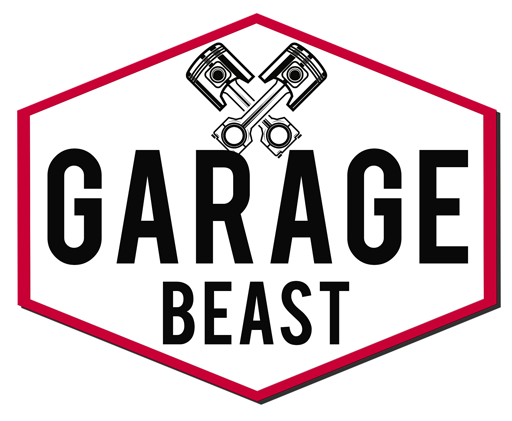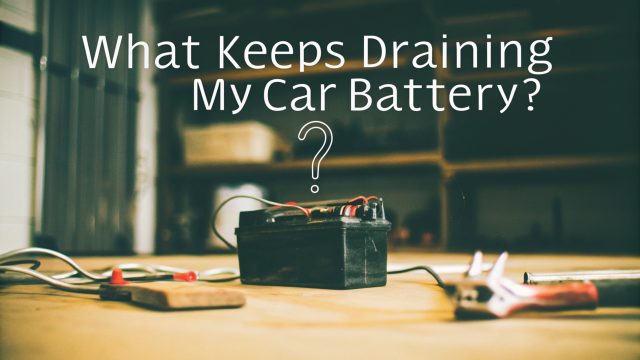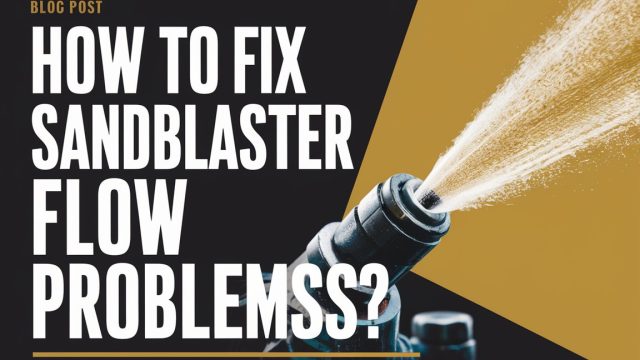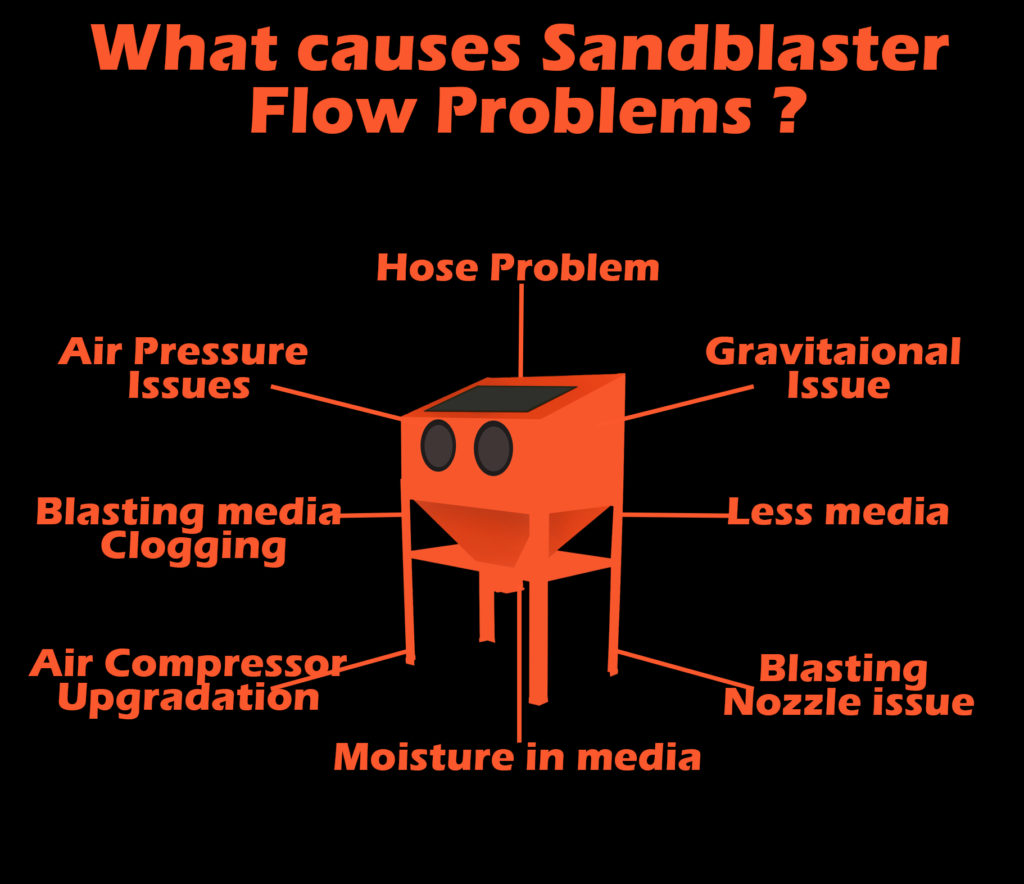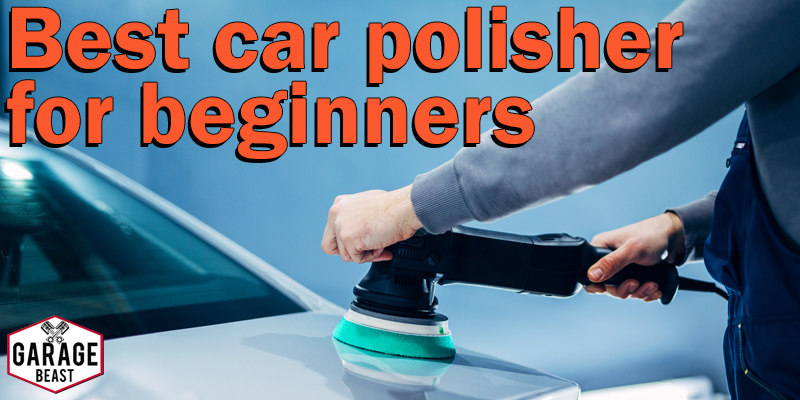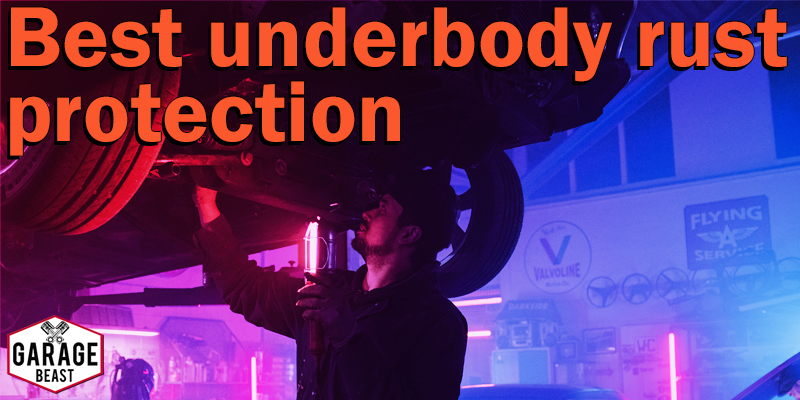Do you live near a coastal area or is your car has started getting rust well for that we have got some of the Best Underbody Rust Protection.
Rust is a car owner’s nastiest competitor since it corrodes metal. Pieces of your car will begin to come apart over time. That’s why it’s so important to keep rust at bay.
Applying undercoating to the underbody of your automobile or truck is one technique to do so.
Salt, rock, gravel, moisture, and other corrosive elements are all protected by undercoating on the bottom of your car.
These compounds can be used to level out the surface area or as rust converters.
It might be difficult to pick the proper undercoating for your needs because there are so many options available online and in stores.
In the buying guide below, we highlight some of the best underbody rust protection products.
#1 Fluid Film TPAS11 Automotive Corrosion Protection


This is the best underbody rust protection solution on the market right now.
The coat is made using refined petroleum oils, processed wool wax, and other specifically selected corrosion-controlling ingredients.
Furthermore, the chemicals that make up this coat inhibit metal wetting and water displacement. Fluid Film TPAS11 is a brand-new product on the market that guarantees client pleasure.
Manufacturers entice customers to stay by offering free shipping on orders over $49.
Buyers should anticipate receiving a package comprising three cans with an 11.75-ounce rust-preventative solution.
This rust-preventive, non-toxic lubricant is a long-lasting, thixotropic liquid utilized in the aerospace, aircraft, and car industries.
It’s solvent-free, won’t dry up, and may be used on any metal basis. It protects against corrosion and salvages heavily rusted and frozen components, such as nuts and bolts.
This is a great rust-prevention coating for vehicles and trucks in general.
For maximum coverage, it crawls into all the corners and crevices of your vehicle’s underbody.
It’s also simple to apply, all-natural, and resists corrosion while repelling water, snow, and ice.
The stuff, however, is sticky and has a strong odor. It may emit some white smoke during the first few drives.
Pros
• Easy to use
• Affordable price
• 100% satisfactory results
• Excellent rust protection
Cons
• Unpleasant odor
#2 Dynatron 544 Dyna-Pro


This best underbody rust protection is useful for protecting a car’s undercarriage from corrosion.
It provides all-weather protection and can endure for the whole of a winter season.
Even on corroded surfaces, the coat feels smooth and has a glossy appearance.
The spray’s molecules are securely linked using an electro-mechanism to produce a robust barrier against rust and chipping, thanks to 3M’s power.
The product comes with an easy-to-use brush, sprays easily, and dries quickly. With a conventional refinish paint method, you’ll have no trouble applying the coating, and it’ll match any OEM hue.
It also possesses excellent sealing, anti-abrasion, and anti-corrosion qualities. It also muffles the undercarriage’s noise.
The undercoat’s primary flaw is that it doesn’t adhere well to oily surfaces or previous undercoats.
You’d have to rub them off before using the spray, which might take a long time.
It’s also costlier than other rubberized undercoats and has a shorter shelf life once opened.
Weathering, salt spray, chipping, and dust are all resistant to its flexible rubberized covering.
Moreover, for greater customer satisfaction, it is completely paintable and texturized to match OEM paint finishes.
Pros
• Easy to apply
• Suitable for all weather conditions
Cons
• A bit pricey
• Not durable
#3 POR-15 Rust Preventive Coating


On metal structures and components, oxidation is a prevalent occurrence. POR-15 45401 is shown. Rust Preventive Coating is a high-quality coating that addresses these issues.
The majority of individuals prefer these protective jackets since they offer long-term solutions.
They were developed for direct application to sandblasted, seasoned, and prepared corroded surfaces by the manufacturers.
Customers should clean surfaces before applying the coatings, according to most manufacturers. There is no need to remove rust from the surface before spraying POR-15 45401.
It can be used on rust that has already developed. Another feature that sets them apart is their resilience to acids and alkalis.
Manufacturers promise consumers that rust will not reappear. POR-15 45401 Rust Preventive Coating, on the other hand, is photosensitive.
After extended exposure, experts advise consumers to coat them.
This underbody rust protection completely covers the car and adds a nice sheen to the metal.
It has excellent rust-proofing properties, and once set, nothing can penetrate it.
It’s well worth the effort and money, and it gives you piece of mind since you just have to paint the surface once, and you’ll never have to worry about rust.
The product, however, is UV light sensitive and requires a top coat if the surface area is exposed to sunshine.
It’s also rather filthy and will discolor whatever it comes into touch with, so be cautious while using it.
Pros
• Provides a smooth finish
• Best rust coating
• Resistant to alkalis and acids
• Easy to apply
Cons
• Easy to contaminate in moisture
• Packaging is poor
#4 VHT SP229 Rust Convertor Can


This best underbody rust protection lacquer is specifically designed to be sprayed directly over corroded areas, according to the manufacturers.
A transparent spray is dispersed when sprayed; nevertheless, after drying, the final hue is a black coat. Their ability to resist corrosion makes them a popular option among many individuals.
Furthermore, the recipe sands the surface to give it a smooth and uniform finish. These coatings are designed to be applied over body fillers, metal surfaces, and fiberglass.
Customers who need to add coats should wait for the first coat to dry fully before proceeding.
Rust is destroyed by VHT Rust Convertor as soon as it comes into touch with it.
It goes on clear and hardens into a black metal-protecting covering that prevents rust from developing in the future.
Rust Convertor is a specially designed sanding compound that sands to a smooth, uniform surface over metal, body filler, or fiberglass.
VHT SP229 Rust Convertor is a one-of-a-kind solution that may be sprayed directly on corroded areas for stopping rust on cars.
It goes on clear and hardens into a black metal-protecting covering that prevents rust from developing in the future.
Formulated specifically for use over metal, body filler, or fiberglass.
Pros
• Easy to apply
• Converts rust quickly
• Prevents recurring rust
• Acts also as a primer
Cons
• Often leaks out
#5 Penray 4424 Rubberized Undercoat


The Penray 4424 is a low-cost undercoat that won’t bleed through when painted over. It’s also a water-resistant compound that provides a barrier against dust, road salt, rust, and severe weather.
Penray comes in a convenient aerosol container with no drips or clumps for simple application.
Its rubberized composition reduces road noise by acting as an insulator.
Metal surfaces are sealed, protected, and rustproofed using this spray. This best underbody rust protection works well with a variety of paint finishes, including matte black.
All automotive applications, such as the frame, wheel wells, and undercarriage, can benefit from the spray.
It’s also good for home foundations and basic roof and gutter repairs.
Its drawback is that it takes too long to dry, especially when applied to the underbody of a car.
It’s possible that the undercarriage may need to dry for at least two days.
Furthermore, while being a low-cost product, you will need to apply many coats, and the 16-ounce container may run out before you finish the task.
This spray, on the other hand, is safe to use on vehicles, trailers, trucks, and RVs.
Pros
• Protects surfaces from road salt, rust, corrosion, fumes, and extreme heat.
• Waterproof Coating
• Helps reduce road noise
Cons
• Takes too long to dry
#5 Fluid Film 1 Gallon Can Rust Inhibitor Rust Prevention


Another best underbody rust protection paint that delivers effective corrosion protection is now available.
All metals and moving components respond well to Fluid Film 1 Gallon rust prevention coat.
They also produce the greatest battery terminals, vinyl, and wood alternatives.
Fluid Film 1 Gallon coat has been a big selling for a few years, providing structures with long-term protection.
Professionals used this formula in the past on offshore drilling rigs and in harsh maritime settings.
People currently utilize them in the aerospace, car, and aircraft sectors, thanks to technical developments. Furthermore, they make excellent items for home improvement tasks.
The producer creates a high-quality product by employing refined petroleum oils, wool-wax, and anti-rust chemicals.
They also inhibit rust penetration, water displacement, and metal wetting in addition to reducing rust. As a result, the Fluid Film 1 Gallon coat is devoid of solvents.
Metals are guaranteed to be protected to the fullest extent possible in all environments.
It’s a non-toxic, long-lasting thixotropic liquid that’s been utilized in the extremely corrosive marine environment of ships and offshore drilling rigs for more than fifty years.
To offer corrosion control, penetration, metal wetting, and water displacement, FLUID FILM is made up of carefully processed wool-wax, highly refined petroleum oils, and chosen agents.
The long-lasting substance is solvent-free, will not dry up, and will penetrate to the base of all metals, stopping rust on cars and protecting them against corrosion in both natural and industrial environments.
Pros
• Offers powerful corrosion protection
• Smoothens and shines surfaces
• Affordable price
Cons
• Peels off faster in extreme weather conditions
• Poor packaging
Benefits of undercoating
Provides Additional Protection
The best undercoat formulations will add an additional layer of dust, moisture, and corrosion resistance. Gravel and other things that may ruin the undercarriage are less of a concern.
Saves Money and Time
It might be pricey to hire a professional to apply an undercoating to your car. In addition, you must schedule an appointment, schedule time to bring your vehicle to the shop, and wait for the findings.
You’ll save a lot of money if you do the job yourself, and you’ll have more flexibility in terms of when and where you do it.
Minimizes Road Noise
Due to age and rust-related disasters, your vehicle’s undercarriage may vibrate a little.
Undercoat treatments are meant to fill up minor gaps and seams beneath your car that might cause noise while driving.
Things to consider while buying underbody rust protection
You should be aware that selecting the finest option from the many categories listed above might be difficult at times. As a result, we felt it would be prudent to put up a detailed shopping guide to help you make an informed selection.
The Surface to Paint
Have an idea if you’ll be dealing with a visible surface or not before you buy the best underbody rust protection spray for automobiles.
A rust inhibitor is needed on a visible surface since it may function as a primer, allowing you to paint over it fast.
It’s also worth noting that underbody paint capable of converting existing rust might leave a dark brown residue.
To provide proper coverage, experts recommend applying up to three coats of paint.
The Surface to be treated
When it comes to picking the finest rust proofing for cars, it’s important to know what kind of surface your underbody paint works best on.
Metals, body filler, and fiberglass are the ideal candidates for most car underbody and rust protection treatments.
Make careful to read the manufacturer’s recommendations before deciding on the best one for you.
Types of Underbody Paint
Underbody paints are available in a variety of kinds on the market. Understand the type that best matches your needs before purchasing to prevent humiliation.
Volume
Manufacturers recommend that you calculate the volume you require before selecting the finest underbody coating.
Have a rough estimate of the size of your car or the area you’ll be covering below it.
If you want to cover the entire underside, you’ll need several underbodies. As a result, larger vehicles are compatible with gallons.
Prevention or Removal
As little as this element may appear, providing your automobile with the greatest undercoating to avoid rust is critical.
Check to see whether there is any current rust or if you only need to prevent new rust from forming. If there is rust on the surface, you should get a solution that allows you to successfully paint over the rust.
Nonetheless, you will find that most systems include both features; however, you must verify on a frequent basis.
Ease of Application
Working with a wire brush over many uneven surfaces may not be comfortable. Then, under automobile rust prevention provided by spraying, you should select the finest option.
Over rust, you should use a normal paint recipe rather than one that comes in a spray can. The two available purchasing options are a regular gallon bottle and a spray bottle.
If you’re buying a one-gallon underbody vinyl wrap vs paint, make sure you have a rust proofing vehicle underbody paint gun.
As a result, you may buy a spray can to do the same job.
Experts, on the other hand, advocate utilizing a paint spray gun to make the application more effective and durable.
Tips to prevent rust
- You should wash your automobile on a regular basis to eliminate any filthy water or salt, which are the major causes of rust
- When your car is not in use, you may put it beneath a cover to protect it from water and other rust-causing elements such as salt
- Check for rust on a regular basis to see if there are any symptoms of future corrosion. You will be able to keep your automobile secure if you do this
- Waxing your automobile every four to five months can add an extra layer of protection against salt and water
Conclusion
On the market, there are a range of the best underbody rust protection formulations. All of the formulations have the same goal of preventing rust on buildings and components.
Other alternatives, on the other hand, provide other functions in addition to rust prevention. Others, in addition to providing protection, also serve as lubricants and primers.
They not only provide necessary protection, but they also enhance the look of the surfaces.
This underbody rust protection review’s idea informs potential buyers about the finest undercarriage rust treatment alternatives on the market that are worth the money.
FAQs
Does undercoating really work?
Yes. It acts as a protective barrier, keeping moisture, salt, and other contaminants from damaging the underneath of your car.
Which rust proofing is best?
A drip or dripless oil spray, an undercoating, or an electronic rust prevention system are all options for preventing rust on your car. In this shopping guide, we’ve included a lot of solid alternatives.
What should be used to clean the vehicle before applying an undercoat?
To clean the curves of the underbody, you’ll need a pressure washer or an air hose. To prevent rusting on cars and other difficult stains on metal surfaces, you’ll also need a rim cleaner, engine cleaner, degreaser, and cleaning chemicals.
How often should I give my vehicle an undercoat?
As your tires like to flick up moisture, ice, pebbles, and dirt at your vehicle’s body, a fresh undercoat should be sprayed once a year, and especially before the start of the winter season. Salt particles are helpful for stopping rust on cars if you live near the water. Apply a new coat at least twice a year in this scenario.
